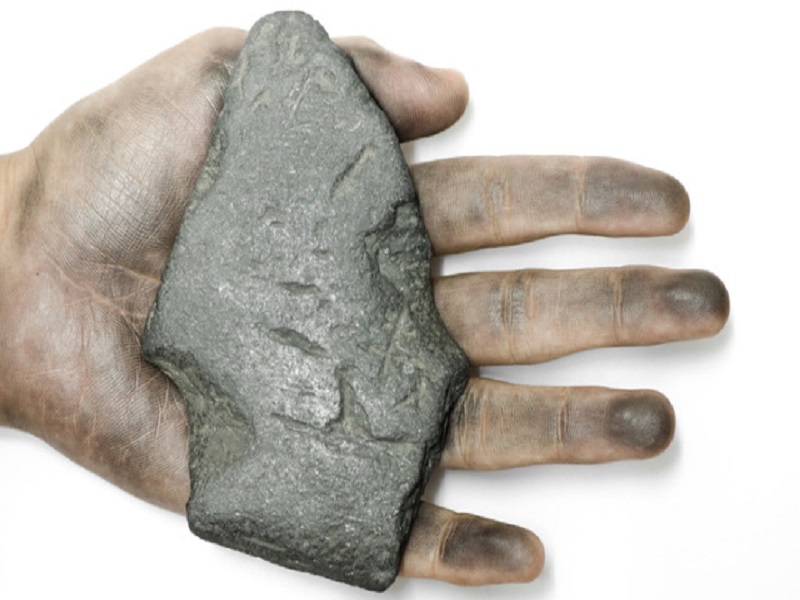The key to the momentous global energy transition is what Goldman Sachs calls the “great battery race”, and while attention has been absorbed by lithium, one critical mineral in the battery mix is possibly the most lucrative back door entrance into this race. Mentioned in today’s commentary includes: Tesla Inc. (NASDAQ: TSLA), Nio Limited (NYSE: NIO), Chargepoint (NYSE: CHPT), Blink (NASDAQ: BLNK), General Motors (NYSE: GM).
The mineral is graphite, and it is the key element that forms the anode of the lithium batteries. Without it, there will be no energy revolution and the trillion-dollar EV market might not exist.
In 2019, the global graphite market was valued at $14.9 billion. By 2027, it’s expected to be valued at nearly $22 billion. It might be worth much more than that, though.
Each EV battery contain 20-30% graphite, which means that graphite demand will soar in tandem with EV demand. And at the same time, both China and the US are now struggling with a graphite squeeze.
While EV giants have been busy scrambling for lithium sources around the world, new concerns have arisen about a lack of graphite supply.
Some 90% of graphite anodes used in batteries comes from China. It’s yet another critical battery mineral that is becoming a national security issue for the United States, and it may be as revolutionary as plastic was in the 1950s:
With the supply squeeze on and EV demand skyrocketing as the leader in a global energy transition, we think it’s time to take a much closer look at one of the veteran processors of this mineral, Graphex Group Ltd (GRFXY.QX, 6128.HK).
They’ve been around since 2008 and have developed methods for graphic processing since 2013. They’re veteran producers with major long-term contracts in China and working with some of the biggest household names.
Now, they’re looking to jump into the U.S. and European markets to help supply the growing battery manufacturing industry just beginning to be established, where new supplies of graphite are feeling the squeeze. Graphex’s President John DeMaio is making a push with the expansion of their USA based team to focus on the North American and European expansion plans to be an integral part of the supply chain being created to support the western EV industrial complex currently being built.
Double-Digit Demand Growth
Graphex believes the graphene market will see double-digit growth for the next 5 years with an estimated 29% CAGR. While the overall car market slumped during COVID, global EV sales grew an astonishing 41% in 2020 to about 3 million electric cars, and more growth is coming, says IHS Markit, spurred in part by major policy boosts across the globe. As of year-end 2020, China had 4.5 million EVs, and Europe 3.2 million.
“Rates of EV sales will rise sharply”, says IHS Markit, which defines the “tipping point” as 2027. That’s when they will reach manufacturing cost parity with internal combustion engine (ICE) vehicles in China. After that, it could be a snowball, with price parity hitting the EU next.
The best news: Of the 89 million vehicles IHS Markit expects to be sold in 2030, it predicts 23.5 million will be electric. That means a soaring market for graphite. Graphite serves as the anode in lithium-ion batteries and is also used in electronics and portable tools.
The average HEV needs up to 10 kgs of graphite. The average EV requires up to 70 kgs. A Tesla Model S needs even more. Every million EVs require around 75,000 tonnes of natural graphite.
In 2019, spherical graphite demand in China alone was 200,000 tonnes. A year later, it was up to 240,000 tonnes. In 2020, predictions were that demand for graphite would increase to 1.9 million tonnes by 2028.
In September 2021, the International Energy Agency (IEA) forecast that the electric mobility and low-carbon energy sectors would demand 25 times more graphite per year by 2040 than today. Even in 2019, the USGS was predicting a supply squeeze.
Because the US has no graphite mines, domestic manufacturers import all raw and processed materials. In 2018, US manufacturers imported 40,000 metric tons. That number pales in comparison to the present and future needs.
Graphex (GRFXY.QX, 6128.HK) estimates roughly 1,000,000 tons of demand for spherical graphite alone by 2025.
Tesla’s Nevada gigafactory alone needs an estimated 35,200 tons of spherical graphite–the specific type of graphite required for EV batteries–per year. All this means that there could be a huge opportunity in putting more capacity online, and Graphex isn’t new to this game.
China: The Heart of the Global Opportunity
With the bulk of graphite mined in China, that means that battery manufacturers all around the world are using Chinese raw materials. And Asian battery manufacturers have an even stronger Chinese dependency: They’re not only using raw materials from China … they’re using graphite that’s also processed in China.
Graphex is already established in China. It’s said to be up there in the top five in China, and one of the top in the world.
Neither the U.S. nor Europe engages in any significant graphite processing.
Graphex is producing 10,000 metric tons of spherical graphite inside China, right next to the largest graphite mine. Those mines are owned by the Chinese government and processing that graphite comes with a long-term contract, which means price stability.
Now, Graphex says it’s getting ready to expand to 40,000 metric tons over the next three years, and it looks like the numbers are lining up nicely. Raw materials cost about $500-$800 against a sales price of approximately $2700-$2800 right now.
The company reports it has been maintaining a 27-28% gross margin.
In the production of graphite and graphite technology, Graphex has the advantage of owning a private factory located next to the world’s largest high-quality flake graphic source. It also has 23 patents on production methods, equipment design, environmental protection, and graphene applications.
As DeMaio states “As an advanced technology company providing R&D and product innovations in EV battery tech and alternative energy production, storage, and delivery, Graphex is uniquely positioned for strong growth into markets outside of Asia. Our ability to deliver superior graphite and graphene-related products and technology today – while continuously innovating and expanding our offerings in advance of the evolving needs of tomorrow – will cement Graphex Group as a foundational force in the global energy transition.”
There are some pretty steep technological barriers to entry into this potentially lucrative energy transition back door. For investors, we think that means looking at companies who have proprietary expertise in high-yield, high-volume production, like Graphex.
With a planned 4X expansion underway, and $49 million in total revenues (2020), expansion into the west and continued R&D, this may be one of the best places to start looking for opportunities along the lithium-ion supply chain.
The EV Battery Boom Is Just Getting Started
Due in part to a massive influx of millennial money and the multi-trillion-dollar green energy boom, Tesla Inc. (NASDAQ:TSLA) has emerged as one of the fastest-growing stocks of all time.. And though it’s been caught in some controversial stances this year, like Elon Musk’s decision to buy…and then sell bitcoin, the company is still as promising as ever. And even though the market has taken a downturn in recent weeks, Tesla is still up over 20% year-to-date.
Though Musk has been an undeniable part of Tesla’s major success, he’s also led the company through a number of controversies, especially involving the SEC. Despite this, however, Tesla’s frontman keeps on pushing forward, and the company’s performance has benefited as a result.
Nio Limited (NYSE: NIO) is one of Tesla’s most exciting new competitors, especially as China looks to grow its domestic market. After a rough start after going public in 2018, it’s been on a tear, producing vehicles with record-breaking range. And it’s showing no signs of slowing.
Nio has made all the right moves over the past year to turn heads on the streets and in the marketplace… From its stunningly beautiful – and fast – EP9 supercar to its new line of family-friendly high-performance sedans, Nio is well on its way to retaking control of its local market from Elon Musk’s electric vehicle giant.
Demand for electric vehicles has been ramping up steadily for years. But as we’re approaching the tipping point, there’s a problem that many people are still ignoring And that’s where Chargepoint (NYSE: CHPT) comes in, one of the largest charging station networks in the country.
This leading EV infrastructure player went earlier this year through one of the market’s hottest trends. That made them the first EV charging stock to have gone public via a reverse merger with a special purpose acquisition company, or SPAC. When it comes to the supercharged Level 2 EV charging stations, ChargePoint is the clear leader in the industry.
Blink (NASDAQ: BLNK) is another electric vehicle charging company. Its unique proposition is that many of the company’s charging stations are found in practical locations, such as airports and hotels, making it convenient for drivers to charge up while waiting on flights or in their rooms. A wave of new deals, including a collaboration with EnerSys and another with Envoy Technologies to deploy electric vehicles and charging stations makes it an especially interesting company.
Though electric vehicles typically dominate the headlines in the alternative fuel market, automakers are also looking to hydrogen. General Motors (NYSE:GM) , for example, already has a number of electric cars, but that hasn’t stopped it from betting on hydrogen, as well. And in a surprising market; trains.
In a recent release, Wabtec announced a partnership with General Motors where GM would provide “electric batteries and hydrogen fuel systems” for Wabtec’s trains. These deliveries could begin within the next two years, and could potentially transform the entire industry. This move comes as part of GM’s wider shift towards alternative engine production, including fuel cells powered by hydrogen gas and electric vehicles.









